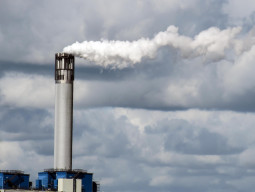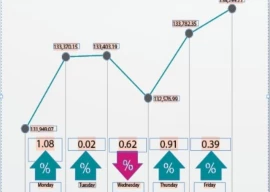
That the country is running out of natural gas is by now a fact that is painfully obvious to most people, with the persistent rationing that has hit almost all parts of the country in one form or another. How and why did we get to this point? Mostly, by selling gas too cheaply for too long, resulting in an enormous amount of waste, which caused our reserves to dwindle too fast. The year 2014 is actually going to be the last year for the foreseeable future when Pakistan’s gas production rises compared to the previous year. It is all downhill from here. Our reserves and our production capacity are both set to decline rapidly for the next decade, and demand is set to exceed supply by four times by the year 2022.
If that scenario scares you, it should. We have built a massive energy infrastructure that is heavily dependent on cheap, abundant natural gas to make it work, from power plants, petrochemical plants, captive power generation in industrial units, to even transportation. Running out of domestic gas supply could bring that entire infrastructure to a screeching halt.
Now, of course, Pakistan can and will soon start importing natural gas from other countries. But that will be far more expensive than what is currently being supplied. To put things in context, the cheapest option for gas import currently even being considered is the Iran-Pakistan pipeline, which would supply gas at over $11 per million British thermal units (mmbtu). The most expensive rate charged by Sui Southern Gas Company to its consumers is $5.3 per mmbtu, and most customers actually pay a lot less than that. If liquefied natural gas is imported from Qatar, it could cost as much as $18 per mmbtu.
The only way to pay for this new, expensive source of gas is to raise everyone’s gas bills. To their credit, the government has already started doing that. Average gas prices for consumers in Pakistan, until just a couple of years ago, were in the range of two to three dollars per mmbtu, much lower than they are today. But this is still not enough. The price charged to consumers needs to equal the price that we will need to pay for the new supply of gas or else the government will end up creating a whole new category of energy subsidy after we have just barely started reducing the burden of the last one (electricity).
What about Pakistan’s new-found shale reserves, one might be tempted to ask? Shale gas has completely revolutionised energy production in the United States and dramatically increased gas production there, and could do the same in Pakistan. It is certainly true that Pakistan’s shale gas reserves could potentially be more than double the amount of recoverable gas reserves in the country from 30 trillion cubic feet to just over 80 trillion cubic feet.
There is, however, one very big problem with shale. Extracting it relies on a process called hydraulic fracturing (‘fracking’) which, as the name implies, relies on water. Not just a little water, but a lot of it. A flood is probably not the best time to say this, but Pakistan is actually a very seriously water-stressed country. We do not have the water supply to be able to begin fracking at any serious scale just yet. The technology would have to change dramatically to become less water-dependent for shale to become a viable option in Pakistan.
What about cracking down on gas theft? Yes, that is a serious problem and that would help alleviate the shortage for a year or so, but not much longer. Gas theft only account for about 10-12 per cent of the total gas production. If the need was for just a 10 per cent or 20 per cent increase in gas price, theft would be a material concern. But the required increase is several orders of magnitude higher. Theft is important, but it will not move the needle. There is no getting around the fact that your gas bill needs to skyrocket.
Published in The Express Tribune, September 19th, 2014.
Like Opinion & Editorial on Facebook, follow @ETOpEd on Twitter to receive all updates on all our daily pieces.


















COMMENTS
Comments are moderated and generally will be posted if they are on-topic and not abusive.
For more information, please see our Comments FAQ